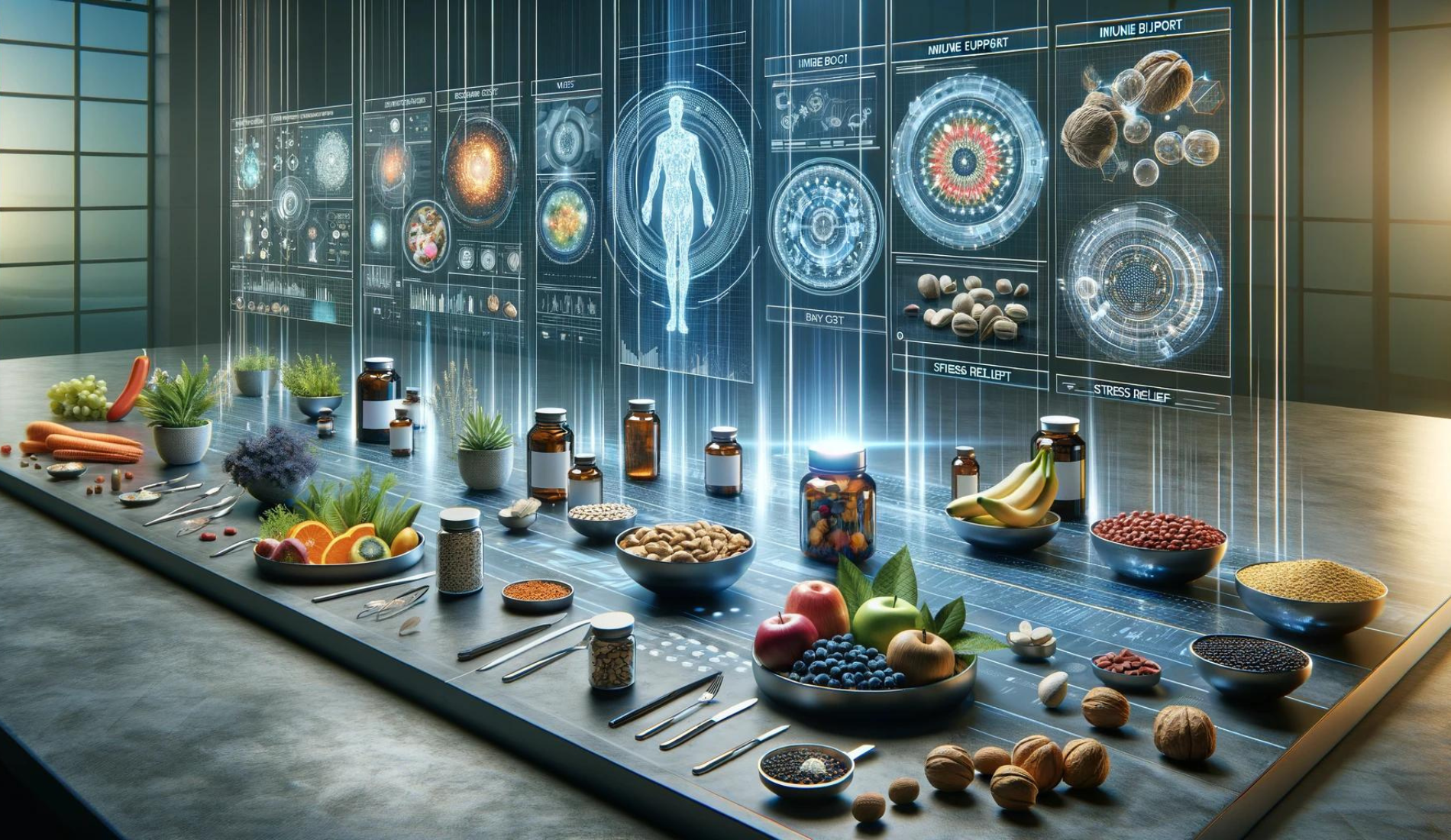
Table of Contents
Key Takeaways
- Your gut microbiome directly affects vaginal health through immune regulation and bacteria transfer.
- Gut dysbiosis increases risk for vaginal infections like BV and yeast infections.
- Balanced estrogen metabolism (via the estrobolome) is critical for vaginal tissue health.
- Diet, probiotics, and lifestyle habits can strengthen the gut-vagina connection naturally.
- Improving gut health boosts immunity and protects reproductive wellness long-term.
Introduction
When we think about gut health, we often focus on digestion, immunity, or energy levels. But the gut plays another critical role that’s frequently overlooked: influencing vaginal health. Inside the digestive system lives a complex community of bacteria — the gut microbiome — that impacts systems far beyond the stomach. One of its essential, but lesser-known, relationships is with the vaginal microbiome, the delicate balance of microorganisms that help maintain vaginal wellness.
Research shows that disturbances in gut bacteria, known as dysbiosis, can directly affect vaginal microbiota, contributing to infections, hormonal imbalances, and inflammation. This interconnected relationship is often referred to as the “gut-vagina axis.” Understanding how these two microbiomes communicate is key to preventing common vaginal issues and supporting reproductive health naturally.
In this article, we’ll explore how gut health shapes vaginal health, why balance matters, and practical steps you can take to strengthen the gut-vagina connection for long-term wellbeing.
Understanding the Gut-Vagina Axis
The gut and vagina may seem like distant parts of the body, but they share a unique and dynamic connection through their microbiomes. Both ecosystems are populated by trillions of bacteria that interact closely with the immune system, influence inflammation, and help maintain protective barriers against harmful pathogens. A healthy gut microbiome can directly support a healthy vaginal microbiome, while gut imbalances can trigger problems in vaginal health.
Scientists refer to this connection as the “gut-vagina axis.” Communication between these two systems occurs through bacterial migration, immune signaling, and hormone regulation. Disruptions in gut bacteria — whether from poor diet, antibiotics, or chronic stress — can weaken the body's defenses, making it easier for pathogenic bacteria or yeast to overgrow in the vaginal environment.
By understanding how these two microbiomes work together, it becomes clear why nurturing gut health is essential for maintaining vaginal balance, preventing infections, and promoting overall reproductive wellness.
How Gut Dysbiosis Disrupts Vaginal Health
Gut dysbiosis occurs when the balance of beneficial and harmful bacteria in the gut is disturbed. Factors like antibiotic use, poor diet, chronic stress, and environmental toxins can all contribute to this imbalance. When dysbiosis develops, it doesn’t just affect digestion — it sends ripples throughout the body, including the vaginal ecosystem.
A disrupted gut microbiome can weaken the immune system and alter hormone metabolism, two critical factors that help maintain vaginal health. As a result, women may experience an increased risk of bacterial vaginosis (BV), yeast infections, urinary tract infections (UTIs), and general vaginal irritation. Imbalanced gut bacteria can also promote systemic inflammation, further making the vaginal environment more susceptible to pathogenic overgrowth.
Maintaining a healthy and diverse gut microbiome isn’t just important for gastrointestinal health — it’s a frontline defense for preserving the delicate balance of the vaginal microbiome and supporting long-term reproductive wellness.
The Role of Estrogen and the Estrobolome
Estrogen is a key hormone that influences many aspects of women’s health, including vaginal tissue thickness, lubrication, and the ability to maintain a Lactobacillus-dominant vaginal microbiome. What’s often overlooked is the role the gut microbiome plays in regulating estrogen levels through a subset of bacteria called the estrobolome.
The estrobolome refers to gut microbes that produce an enzyme called beta-glucuronidase. This enzyme helps recycle estrogen in the body, keeping hormone levels balanced. When the gut microbiome is healthy, estrogen metabolism functions properly, supporting vaginal health by promoting a low pH environment and encouraging the growth of protective bacteria.
However, gut dysbiosis can impair the estrobolome’s function. This can lead to either an excess or a deficiency of estrogen, both of which can negatively impact vaginal health. Symptoms might include vaginal dryness, irritation, susceptibility to infections, or hormonal imbalances linked to conditions like endometriosis and PCOS. Protecting gut health is, therefore, crucial for maintaining optimal estrogen balance and vaginal wellness.
Signs Your Gut May Be Affecting Your Vaginal Health
Since the gut and vaginal microbiomes are closely connected, imbalances in the gut often show up as symptoms related to vaginal health. Recognizing these early warning signs can help you take proactive steps to restore balance before more serious issues develop.
- Frequent vaginal infections: Recurrent bacterial vaginosis, yeast infections, or UTIs may point to underlying gut dysbiosis weakening immune defenses.
- Digestive issues: Symptoms like bloating, constipation, diarrhea, or irregular bowel movements often go hand-in-hand with microbiome imbalances that affect vaginal health.
- Hormonal imbalances: PMS, irregular menstrual cycles, and symptoms of estrogen dominance or deficiency may suggest gut microbiome disruption affecting estrogen metabolism.
- Lowered immunity: Getting sick easily, chronic fatigue, or inflammation can be tied back to poor gut health, which also impacts the vaginal microbiome's ability to resist infection.
- Unexplained vaginal discomfort: Changes in discharge, odor, irritation, or dryness without clear infection can sometimes stem from gut-driven microbiome shifts.
If you are experiencing one or more of these symptoms, it could be a sign that your gut health needs attention to protect your vaginal and overall health.
How to Strengthen the Gut-Vagina Connection
Maintaining a healthy gut is one of the most effective ways to support vaginal health naturally. By focusing on strategies that nourish beneficial bacteria, reduce inflammation, and promote hormonal balance, you can strengthen the gut-vagina axis and protect your overall wellness.
- Prioritize a fiber-rich diet: Include vegetables, fruits, whole grains, legumes, and nuts daily. Fiber feeds good gut bacteria and enhances microbiome diversity.
- Incorporate targeted probiotics: Use probiotic supplements that include strains like Lactobacillus rhamnosus, Lactobacillus reuteri, and Lactobacillus crispatus to support both gut and vaginal ecosystems.
- Limit processed foods and added sugars: Sugary and ultra-processed foods promote the growth of harmful gut bacteria that can disrupt vaginal balance.
- Manage stress effectively: Chronic stress disrupts the gut microbiome. Regular exercise, mindfulness practices, and quality sleep can help maintain microbial balance.
- Stay hydrated: Drinking enough water supports digestion, detoxification, and mucosal health across all microbiomes.
- Use antibiotics cautiously: If antibiotics are necessary, always pair them with probiotic therapy to minimize collateral damage to beneficial bacteria.
Consistency is key. Small daily habits that nourish your gut will have a positive, lasting impact on vaginal health and overall hormonal balance.
Best Foods to Support Gut and Vaginal Health
Certain foods naturally feed beneficial bacteria and promote microbial balance across both the gut and vaginal ecosystems. Including these regularly in your diet can help strengthen the gut-vagina connection.
| Food Type | Examples | Benefit |
|---|---|---|
| Leafy Greens | Spinach, Kale, Arugula | Rich in fiber, minerals, and antioxidants for microbiome nourishment |
| Fermented Foods | Yogurt, Kefir, Sauerkraut, Kimchi, Miso | Provide live probiotics to strengthen gut and vaginal flora |
| Fiber-Rich Foods | Lentils, Chickpeas, Oats, Chia Seeds, Berries | Feed beneficial gut bacteria and improve digestion |
| Prebiotic Foods | Garlic, Onions, Asparagus, Bananas | Fuel the growth of existing good bacteria |
| Omega-3 Rich Foods | Salmon, Walnuts, Flaxseeds | Reduce inflammation and support gut barrier integrity |
| Polyphenol-Rich Foods | Green Tea, Dark Chocolate, Blueberries | Enhance good bacteria and combat oxidative stress |
Building meals around these gut-supportive foods, while minimizing sugar and processed products, creates a strong foundation for optimal vaginal health.
Supplements That Support Gut and Vaginal Health
While diet is the foundation, certain supplements can provide targeted support to help strengthen both the gut and vaginal microbiomes. Choosing high-quality products with clinically studied strains or ingredients can make a significant difference.
| Supplement | Purpose | Tip |
|---|---|---|
| Probiotic Supplements | Restore beneficial bacteria in the gut and vagina | Look for strains like Lactobacillus rhamnosus, Lactobacillus reuteri, and Lactobacillus crispatus |
| Prebiotic Supplements | Feed existing good bacteria and improve probiotic effectiveness | Choose prebiotics like inulin or fructooligosaccharides (FOS) |
| Omega-3 Fatty Acids | Reduce inflammation and support microbiome balance | Use high-quality fish oil or algae-based omega-3 supplements |
| Vitamin D3 | Enhances immune function and supports microbial diversity | Get levels tested and supplement as needed |
| Digestive Enzymes | Support better digestion and nutrient absorption for microbiome health | Use enzymes that target proteins, carbs, and fats |
When selecting supplements, quality matters. Choose reputable brands, check for third-party testing, and work with a healthcare provider if you're unsure which options are best for your needs.
FAQ
Yes. The gut and vaginal microbiomes are closely connected. Disruptions in gut bacteria can weaken immune responses, promote inflammation, and create an environment where pathogenic bacteria or yeast can overgrow in the vaginal area.
Frequent infections like bacterial vaginosis or yeast infections, digestive problems, hormonal imbalances, chronic fatigue, and unexplained vaginal irritation may indicate that gut health needs support.
Look for probiotics containing Lactobacillus rhamnosus, Lactobacillus reuteri, and Lactobacillus crispatus. These strains are clinically studied for their role in supporting both gut and vaginal microbiomes.
With consistent diet, probiotic use, and healthy lifestyle habits, many people notice improvements within 4 to 8 weeks. However, full microbiome restoration can vary depending on the severity of imbalance and individual factors.
Supplements can help, but they work best alongside a fiber-rich diet, hydration, stress management, and avoiding processed foods. A holistic approach provides the strongest foundation for long-term microbiome balance.
Final Thoughts: Protecting Two Microbiomes at Once
Gut health and vaginal health are not isolated systems — they are deeply interconnected. Supporting one naturally strengthens the other. By focusing on daily habits that nurture your gut microbiome, you also create an environment where your vaginal microbiome can thrive.
Simple changes like improving your diet, using targeted probiotics, managing stress, and staying hydrated can have a profound impact. These strategies don’t just reduce the risk of infections — they build a foundation for stronger immunity, balanced hormones, and better long-term reproductive health.
Your gut and vagina are in constant communication. When you prioritize the health of one, you invest in the resilience of both.
Disclaimer
This article is for informational purposes only and is not intended as medical advice. Always consult with a qualified healthcare professional before making changes to your diet, supplement routine, or healthcare practices. Individual results may vary. If you have specific health concerns, consult your doctor or healthcare provider for personalized guidance.
References
- Fettweis, J.M., Serrano, M.G., Girerd, P.H., et al. (2022). "The vaginal microbiome and preterm birth." Frontiers in Cellular and Infection Microbiology. Retrieved April 27, 2025, from Frontiersin.org
- Di Pierro, F., Parolari, A., & Pinto, A. (2021). "Diagnostics and therapeutic potentials of the vaginal microbiome." Diagnostics, 11(1), 7. Retrieved April 27, 2025, from MDPI.com
- Pace, F., & Pace, M. (2017). "Probiotics and gut health: Evidence for the gut-vagina axis." Microbial Pathogenesis, 106, 103-112. Retrieved April 27, 2025, from ScienceDirect.com
- Wang, Y., Gu, Y., et al. (2023). "The vaginal microbiota in health and disease." Frontiers in Microbiology. Retrieved April 27, 2025, from Frontiersin.org
- Harvard Health Publishing. (2019). "Should you use probiotics for your vagina?" Retrieved April 27, 2025, from Harvard.edu
- Reid, G., et al. (2017). "The role of lactobacilli in maintaining vaginal health." European Journal of Obstetrics & Gynecology and Reproductive Biology, 206, 1-7. Retrieved April 27, 2025, from Elsevier.com
- Plottel, C.S., & Blaser, M.J. (2016). "Microbiome and malignancy." JNCI Journal of the National Cancer Institute, 108(8). Retrieved April 27, 2025, from OUP.com
- Olm, M.R., et al. (2023). "Dynamics of vaginal microbiome during health and disease." Frontiers in Cellular and Infection Microbiology. Retrieved April 27, 2025, from Frontiersin.org
- Wang, X., et al. (2023). "Vaginal microbiota and its regulation by diet." Heliyon. Retrieved April 27, 2025, from Cell.com
- Ghimire, S., et al. (2024). "Microbiome and cancer therapy outcomes." Journal of Hematology & Oncology. Retrieved April 27, 2025, from BMC.com
- Medical News Today. (2023). "How gut health affects your entire body." Retrieved April 27, 2025, from MedicalNewsToday.com
- Fang, Z., et al. (2022). "Gut microbiota and female reproductive health." Frontiers in Endocrinology. Retrieved April 27, 2025, from PMC.ncbi.nlm.nih.gov
- Sun, M., et al. (2023). "Microbiota-gut-reproductive tract axis." Biomedical Journal. Retrieved April 27, 2025, from ScienceDirect.com
- Li, Y., et al. (2022). "Gut microbiome composition and dynamics in human health." npj Biofilms and Microbiomes. Retrieved April 27, 2025, from Nature.com
- Jin, M., et al. (2021). "Gut microbial regulation of estrogen metabolism." Gut Microbes. Retrieved April 27, 2025, from Taylor & Francis
- Ghosh, S., et al. (2022). "Role of dietary fiber in microbiome modulation." Nutrients, 14(9), 1723. Retrieved April 27, 2025, from MDPI.com
- Long, Z., et al. (2023). "Grain, gluten, and dietary fiber impact microbiota." Cancer Research Communications. Retrieved April 27, 2025, from AACRjournals.org
- Zhou, Y., et al. (2024). "Dietary interventions and gut microbiome in women." Nutrients, 16(20), 3469. Retrieved April 27, 2025, from MDPI.com
- Yang, Y., et al. (2025). "Gut microbiota, probiotics, and women’s health." Best Practice & Research Clinical Obstetrics & Gynaecology. Retrieved April 27, 2025, from ScienceDirect.com
- Medical News Today. (2018). "How the gut microbiome affects hormones and health." Retrieved April 27, 2025, from MedicalNewsToday.com


























































